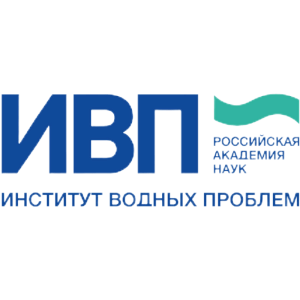Measures of the Vertical Size of River Systems as Indicators of Their Formation Conditions: Case Study of Mountains of Crimea and Caucasian Black Sea Coast
Publication type: Journal Article
Publication date: 2022-07-18
scimago Q3
wos Q4
SJR: 0.309
CiteScore: 1.5
Impact factor: 0.8
ISSN: 00978078, 1608344X
Water Science and Technology
Abstract
The main measure of a river system is commonly accepted to be its catchment area, which determines its main function, i.e., collecting precipitation. However, the river basin also has a volume and a vertical size. The need to take into account the volume of a river basin and to develop the concept of its vertical size (conventionally, “thickness”) stems from both general methodological considerations and the available experience of hydrological studies. A system of new estimates of the “thickness” and volume of a basin is proposed to characterize, in particular, its cut depth, the vertical dissection, the “thickness” of the zone of active water exchange, etc. These characteristics can significantly improve the efficiency of the methods of structural–hydrographic indication in the analysis of erosion–accumulation processes, solid runoff, and, in regions with the obvious predominance of groundwater inflow, in what regards the parameters of water flow. The efficiency of the proposed characteristics is demonstrated in the analysis of river systems developing under contrast geological conditions, i.e., in the Mountain Crimea and in the southern sector of Caucasian Black Sea coast. The extension of the instrumentation, the improvement of the detail and information content of relief analysis can be of universal value and can be widely applied in the Earth sciences.
Found
Nothing found, try to update filter.
Found
Nothing found, try to update filter.
Top-30
Journals
|
1
|
|
|
Ground Water
1 publication, 33.33%
|
|
|
Water Resources
1 publication, 33.33%
|
|
|
Journal of the Indian Society of Remote Sensing
1 publication, 33.33%
|
|
|
1
|
Publishers
|
1
|
|
|
Wiley
1 publication, 33.33%
|
|
|
Pleiades Publishing
1 publication, 33.33%
|
|
|
Springer Nature
1 publication, 33.33%
|
|
|
1
|
- We do not take into account publications without a DOI.
- Statistics recalculated weekly.
Are you a researcher?
Create a profile to get free access to personal recommendations for colleagues and new articles.
Metrics
3
Total citations:
3
Citations from 2025:
0
Cite this
GOST |
RIS |
BibTex |
MLA
Cite this
GOST
Copy
Gartsman B. I. et al. Measures of the Vertical Size of River Systems as Indicators of Their Formation Conditions: Case Study of Mountains of Crimea and Caucasian Black Sea Coast // Water Resources. 2022. Vol. 49. No. 4. pp. 605-615.
GOST all authors (up to 50)
Copy
Gartsman B. I., Belyakova P. A., Suchkova K. V., Shekman E. A., Entin A. L. Measures of the Vertical Size of River Systems as Indicators of Their Formation Conditions: Case Study of Mountains of Crimea and Caucasian Black Sea Coast // Water Resources. 2022. Vol. 49. No. 4. pp. 605-615.
Cite this
RIS
Copy
TY - JOUR
DO - 10.1134/s0097807822040066
UR - https://doi.org/10.1134/s0097807822040066
TI - Measures of the Vertical Size of River Systems as Indicators of Their Formation Conditions: Case Study of Mountains of Crimea and Caucasian Black Sea Coast
T2 - Water Resources
AU - Gartsman, B. I.
AU - Belyakova, P A
AU - Suchkova, K V
AU - Shekman, E A
AU - Entin, A. L.
PY - 2022
DA - 2022/07/18
PB - Pleiades Publishing
SP - 605-615
IS - 4
VL - 49
SN - 0097-8078
SN - 1608-344X
ER -
Cite this
BibTex (up to 50 authors)
Copy
@article{2022_Gartsman,
author = {B. I. Gartsman and P A Belyakova and K V Suchkova and E A Shekman and A. L. Entin},
title = {Measures of the Vertical Size of River Systems as Indicators of Their Formation Conditions: Case Study of Mountains of Crimea and Caucasian Black Sea Coast},
journal = {Water Resources},
year = {2022},
volume = {49},
publisher = {Pleiades Publishing},
month = {jul},
url = {https://doi.org/10.1134/s0097807822040066},
number = {4},
pages = {605--615},
doi = {10.1134/s0097807822040066}
}
Cite this
MLA
Copy
Gartsman, B. I., et al. “Measures of the Vertical Size of River Systems as Indicators of Their Formation Conditions: Case Study of Mountains of Crimea and Caucasian Black Sea Coast.” Water Resources, vol. 49, no. 4, Jul. 2022, pp. 605-615. https://doi.org/10.1134/s0097807822040066.
Profiles






